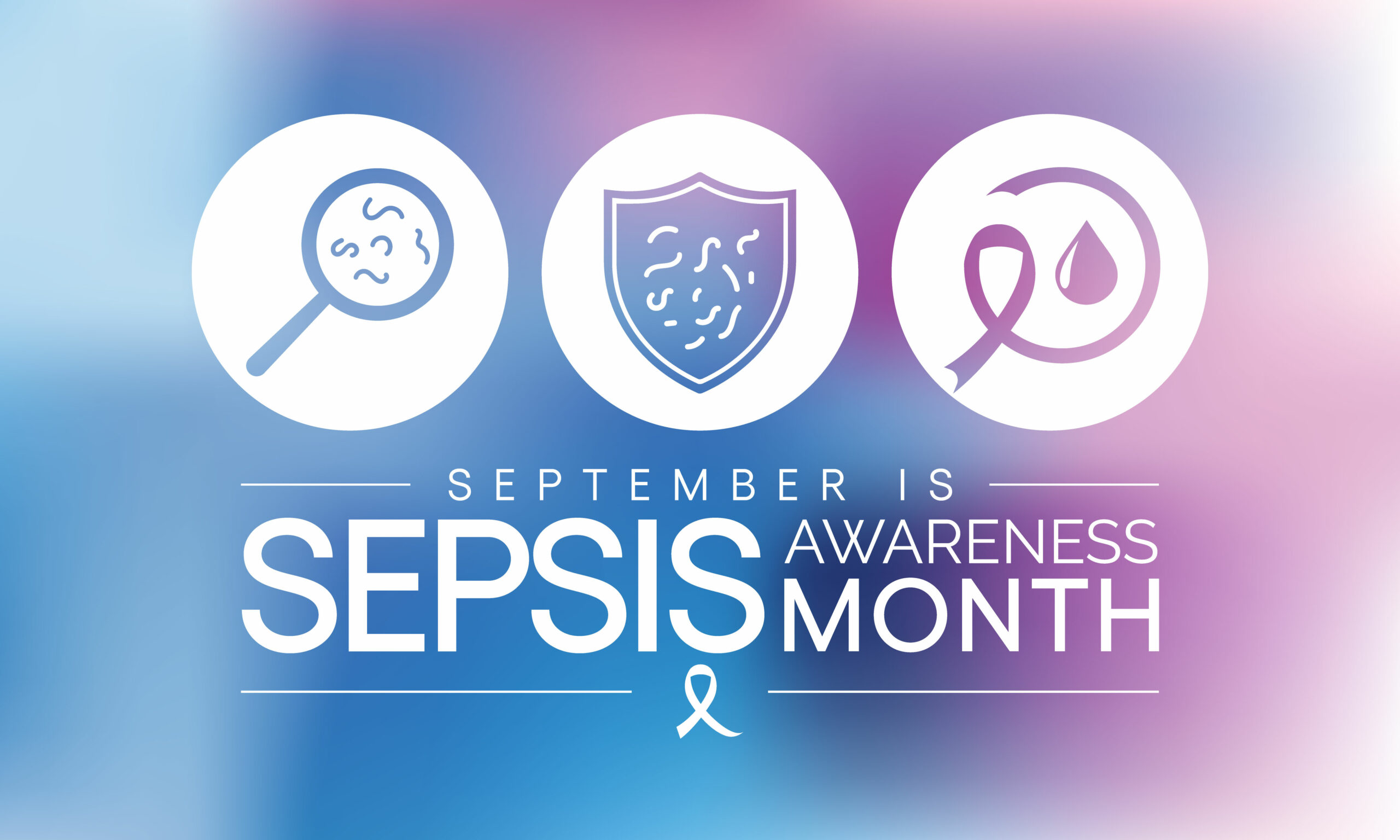
September is Sepsis Awareness Month
According to the CDC, in a typical year, at least 1.7 million adults in America develop sepsis and nearly 270,000 Americans die as a result of it. So, what exactly is sepsis and who is at risk? In honor of Sepsis Awareness Month, we want to answer these important questions.
What is sepsis?
Sepsis is the body’s extreme response to an infection and can be life-threatening. Your immune system works to protect you from infections and fight off any that occur, but it’s possible for it to have an overreactive response to infection.
Symptoms of sepsis
Although a medical assessment by a healthcare professional is needed for a diagnosis, a patient who has sepsis may have one or more of the following symptoms:
- High heart rate or low blood pressure
- Fever, shivering, or feeling very cold
- Confusion or disorientation
- Shortness of breath
- Extreme pain or discomfort
- Clammy or sweaty skin
Three stages of sepsis
There are three different stages of sepsis. Each has its own variation of symptoms a patient may experience. A patient can develop sepsis while they are still in the hospital recovering from a procedure, but that is not the only time/place it can develop. If you are experiencing any of the symptoms below, it is important to seek immediate medical attention. Seeking treatment early on can be lifesaving.
Sepsis
The first stage is simply called sepsis. Symptoms a patient may experience in this stage are:
- Fever above 101ºF or a temperature below 96.8ºF
- Heart rate higher than 90 beats per minute
- Breathing rate higher than 20 breaths per minute
- Probable or confirmed infection
Severe sepsis
The second stage is severe sepsis which occurs when there is organ failure. The following are common symptoms of this stage:
- Patches of discolored skin
- Decreased urination
- Changes in mental ability
- Low platelet count
- Problems breathing
- Abnormal heart functions
- Chills due to fall in body temperature
- Unconsciousness
- Extreme weakness
Septic shock
The third and final stage is septic shock. In this stage, a patient will experience the symptoms of severe sepsis plus a very low blood pressure.
Who is at risk?
Anyone can get sepsis, but some people have a higher risk of infection. Those at higher risk include:
- Young children, particularly those under the age of one
- Adults 65 or older
- Those with a weaker immune system
- People with chronic medical conditions (diabetes, lung disease, cancer, etc.)
- People with recent severe illness or hospitalization
- Sepsis survivors
How sepsis impacts seniors
Adults who are aged 65 or older are reportedly 13 times more likely to be hospitalized with sepsis than those who are younger. Researchers believe our immune system becomes less effective at fighting off infection as we age, which means older people tend to contract more infections that become more severe. Since each infection we get presents a risk of getting sepsis, this puts older adults at a higher risk of developing sepsis.
Any type of infection can cause sepsis but the most common among older people are respiratory such as pneumonia. COVID-19 has also become a strong risk factor for sepsis among older adults. Sometimes it is difficult to spot an infection right away in people who are aging. If an older person becomes confused or starts to behave in an unusual manner, it could be a sign of infection.
How to treat sepsis
Sepsis can quickly progress through the three stages and result in death if left untreated. Treatment includes:
- Antibiotics through an IV to fight the infection
- Vasoactive medications to increase blood pressures
- Insulin to stabilize blood sugar
- Corticosteroids to reduce inflammation
- Painkillers
Preventing sepsis
The best way to prevent sepsis is to prevent an infection. You can do this by:
- Staying up to date on vaccinations
- Practicing good hygiene
- Getting immediate care if you develop an infection
- Proper wound care
What to do if you think you have sepsis
Sepsis is a medical emergency. If you or someone you love has an infection that is not getting better (or is getting worse), it is important to act fast. Get medical care immediately and ask your healthcare professional if the infection could lead to sepsis.
Recovery from sepsis
Recovery typically starts with rehabilitation in the hospital. This includes building your strength back up and receiving help with things like bathing, sitting up, standing, and walking. Upon returning home, it is normal to feel weak and fatigued and have difficulty sleeping. Some people also experience a loss of appetite which results in weight loss. To help keep the recovery process moving, you can rest and rebuild your strength, eat a balanced diet, and exercise if you are feeling up to it.
Some patients experience long-term effects of sepsis. These can include:
- Insomnia
- Nightmares
- Disabling muscle and joint pains
- Decreased mental function
- Loss of self-esteem
- Organ dysfunction
- Limb amputation


